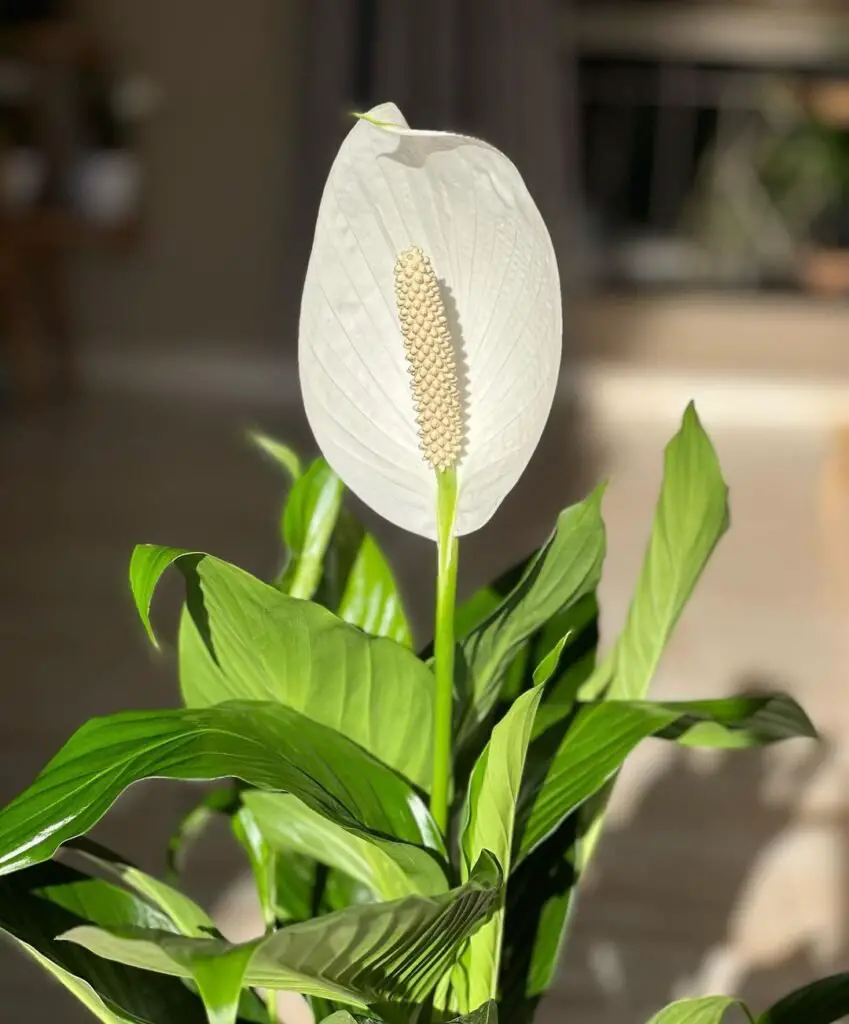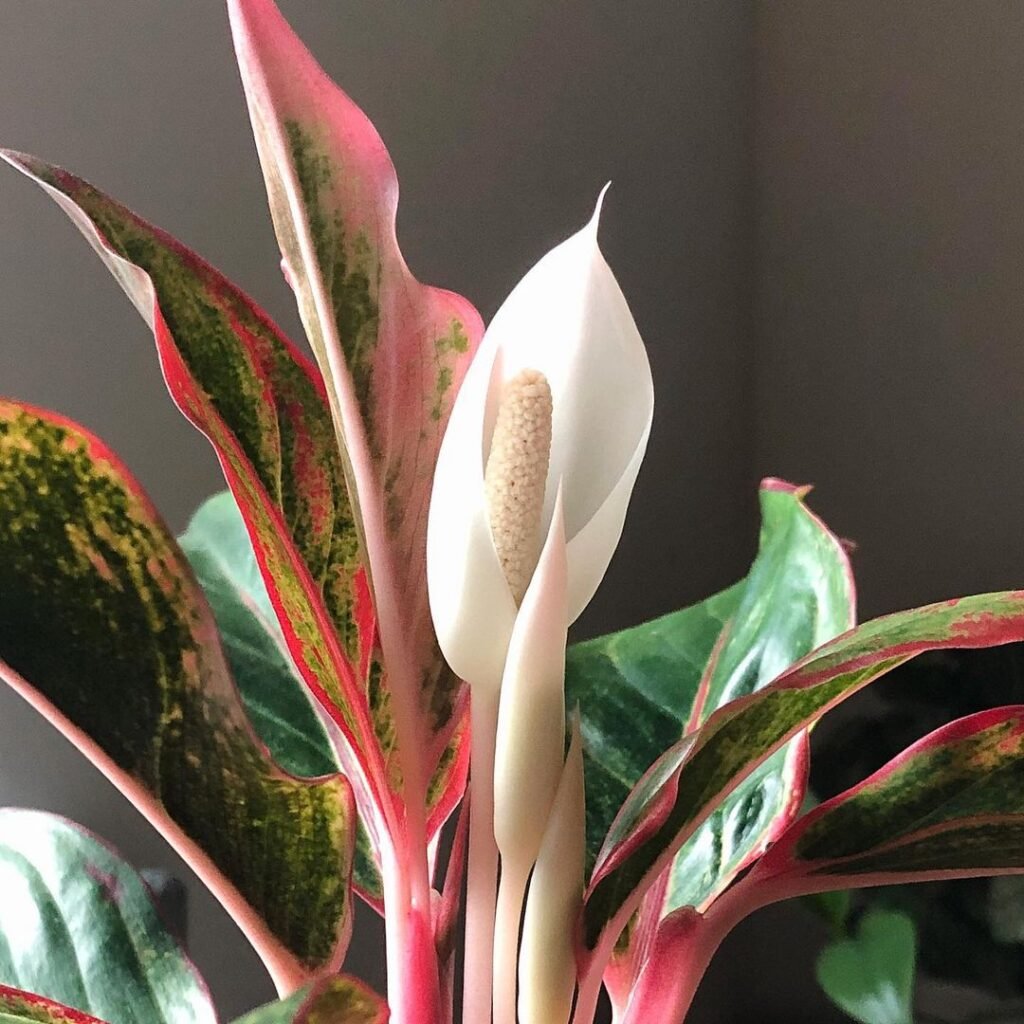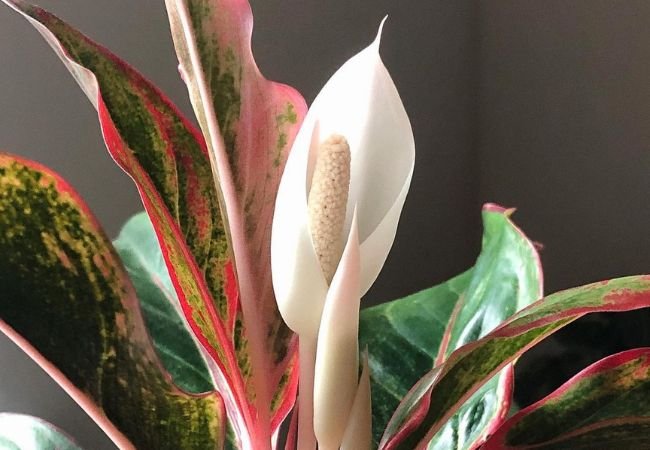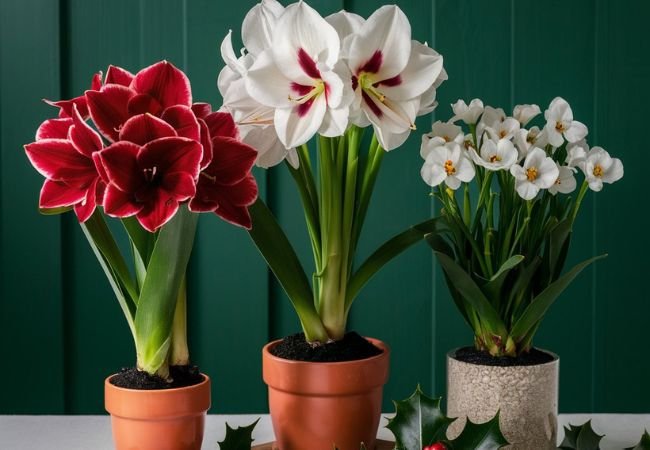Learn how to differentiate between Peace Lily and Chinese Evergreen flowers. Discover care tips and unique features of both plants to help you grow them successfully in your home.
Are you struggling to tell the difference between a Peace Lily and a Chinese Evergreen? You’re not alone! These popular houseplants share some similarities, but they’re quite distinct when you know what to look for. In this guide, we’ll help you differentiate between these two plants and provide essential care tips for each. Whether you’re a seasoned plant parent or a beginner, this information will help you choose and care for the right plant for your home.
Identifying Peace Lilies and Chinese Evergreens
Let’s start by looking at the key features that set these plants apart.
Peace Lily (Spathiphyllum)

Peace Lilies are known for their elegant appearance and air-purifying qualities.
Key identifying features:
- Leaves: Dark green, glossy and oval-shaped with prominent veins
- Flowers: Large, white, hood-like spathes with a central spadix
- Size: Can grow up to 3 feet tall indoors
- Growth habit: Clumping, with leaves growing from the base
Chinese Evergreen (Aglaonema)

Chinese Evergreens are prized for their colorful foliage and easy-care nature.
Key identifying features:
- Leaves: Variegated patterns in shades of green, silver and sometimes pink or red
- Flowers: Small and insignificant, rarely seen on indoor plants
- Size: Usually grows 1-3 feet tall indoors
- Growth habit: Bushy, with leaves growing along stems
Care Tips for Peace Lilies
Now that you can identify a Peace Lily, here’s how to care for it:
- Light: Tolerates low light but thrives in bright, indirect light
- Water: Keep soil consistently moist but not waterlogged
- Humidity: Enjoys high humidity; mist leaves regularly
- Temperature: Prefers 65-80°F (18-27°C)
- Soil: Use a well-draining potting mix rich in organic matter
- Fertilizer: Feed monthly during the growing season with a balanced liquid fertilizer
Care Tips for Chinese Evergreens
If you’ve got a Chinese Evergreen, follow these care instructions:
- Light: Tolerates low light very well; avoid direct sunlight
- Water: Allow soil to dry slightly between waterings
- Humidity: Adaptable to average indoor humidity
- Temperature: Prefers 60-75°F (16-24°C)
- Soil: Use a well-draining potting mix
- Fertilizer: Feed every 6-8 weeks during the growing season with a balanced liquid fertilizer
Key Differences in Care
While both plants are relatively easy to care for, there are some important differences:
- Watering: Peace Lilies prefer consistently moist soil, while Chinese Evergreens like to dry out a bit between waterings.
- Light tolerance: Both can handle low light, but Chinese Evergreens are more tolerant of dim conditions.
- Humidity: Peace Lilies prefer higher humidity and benefit from regular misting, while Chinese Evergreens are more adaptable to average indoor humidity.
Troubleshooting Common Issues
Even with proper care, plants can sometimes have problems. Here are some common issues and how to address them:
Peace Lily Issues:
- Brown leaf tips: Often caused by low humidity or overfeeding
- Yellowing leaves: May indicate overwatering or poor drainage
- No flowers: Usually due to insufficient light
Chinese Evergreen Issues:
- Pale leaves: Often a sign of too much direct sunlight
- Drooping leaves: Can indicate underwatering
- Brown, crispy leaf edges: May be caused by low humidity or fluoride in tap water
Choosing Between Peace Lily and Chinese Evergreen
Still not sure which plant is right for you? Consider these factors:
- Light conditions: If your space has very low light, a Chinese Evergreen might be the better choice.
- Watering habits: If you tend to forget to water, the Chinese Evergreen’s tolerance for drying out makes it more forgiving.
- Aesthetics: If you prefer flowers, go for the Peace Lily. For colorful foliage, choose the Chinese Evergreen.
- Air purification: If improving air quality is a priority, the Peace Lily is slightly more effective.
- Humidity: If your home is dry, the Chinese Evergreen might be easier to care for, as it’s more tolerant of average indoor humidity.
Whether you choose a Peace Lily or a Chinese Evergreen, both plants can bring beauty and improved air quality to your home. By understanding the differences in their appearance and care requirements, you can make an informed decision and provide the best care for your chosen plant.
Remember, the key to successful plant care is observation and consistency. Pay attention to your plant’s needs and don’t be afraid to adjust your care routine as needed. With a little patience and care, your Peace Lily or Chinese Evergreen will thrive, bringing a touch of nature’s beauty into your living space.
Learn more about the air-purifying qualities of houseplants
Discover other low-maintenance houseplants
Happy planting and enjoy your new green companion!
For more gardening tips and plant care guides, visit usagardenhub.com.







One comment on “Peace Lily or Chinese Evergreen Flower : How to Differentiate and Care for Them”